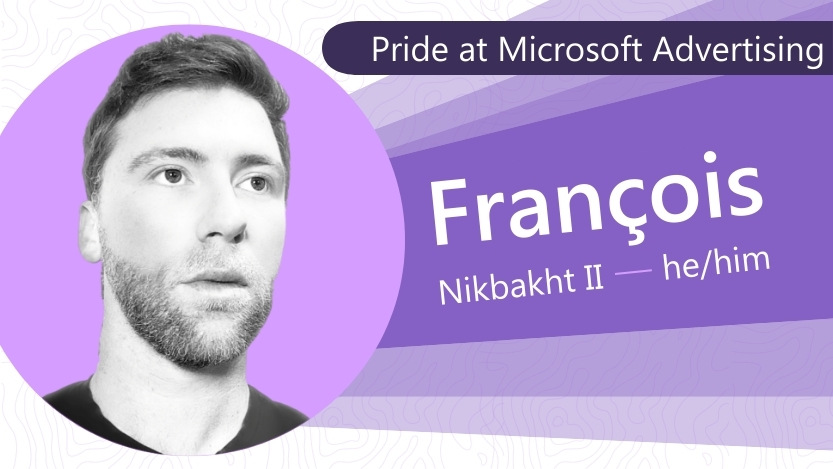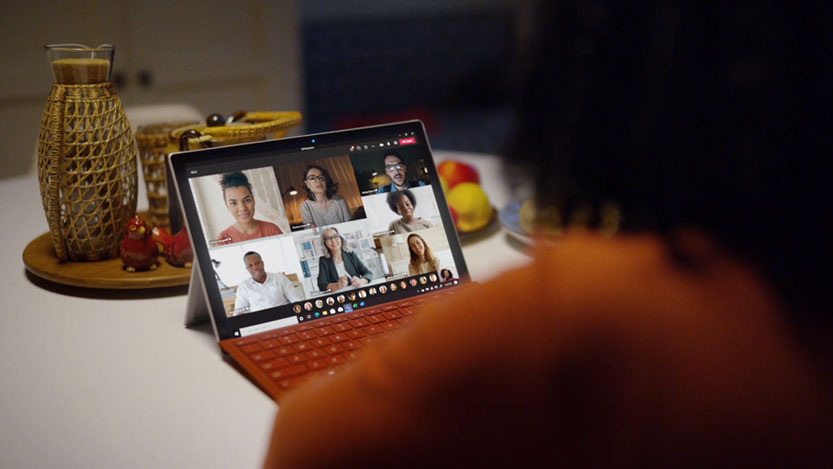Blog post
How to earn LGBTQIA+ customers: a gay marketer’s Pride Month perspective

It’s June: The Northern Hemisphere is warming up, people are increasingly starting to take vacations, and—best of all—it’s global Lesbian, Gay, Bisexual, Transgender, Queer, Intersex, Asexual, and more (LGBTQIA+) Pride Month! To me, it’s the mid-year holiday/festive season. While my lived experience as a gay man is unique, this yearly celebration has been formative to my identity and the identities of many others.
I attended my first Pride festival in West Hollywood, California in 2010, still in college and “in the closet” to my family and many of my friends. It was lifechanging. For the first time, I truly felt safe and broadly validated for who I am. I proudly walked down Santa Monica Boulevard holding hands with my first boyfriend, entranced by all the smiling, dancing, and rainbow garb. It seemed like everyone, including companies, were there to support my community, but it wasn’t until I started my career in marketing and advertising that I realized there is another side to my colorful favorite holiday.

Not all that glitters is gold: “rainbow-washing”
I started my marketing and advertising career as an ad sales and account management professional at a startup. I worked with brands from an array of industries and was responsible for ensuring there was a natural alignment between our advertisers’ campaign assets and our website content. During Pride, I found this task to be difficult. While my company was openly supportive of my community and the leadership team was stacked with active allies, the same could not be said about some of our prospective clients.
Rainbow-washing allows people, governments, and corporations that don't do tangible work to support LGBTQ+ communities at any other time during the year to slap a rainbow on top of something in the month of June and call it allyship.
— Justice Audre
I’ve always been a bit overzealous about quality assurance, and this strength/weakness (it’s your call) inspired me to research how prospective advertising clients had empowered the LGBTQIA+ community to date. Yikes. Many companies had no track record of supporting my community, but a couple had gone as far as to spend money in opposition to local LGBTQIA+ initiatives. What I had initially thought was exciting—serving rainbow advertising realness across our ad space—quickly became a moral dilemma: Should I forego engaging with these brands, which would make it harder for me to achieve my quota, or do I instead stay quiet, act like I know nothing about what I learned, and close some deals (because no one would ever realize the brands were rainbow-washing, right)?
I had an epiphany. This decision, to turn down new business or be silent, was how my company could either show up for my community or fall into the “bad actor” category. I declined the business. Did I receive backlash from anyone? No. Did I end up making my quota, nonetheless? Yes.
I made the right decision, albeit uncomfortably. The risk of not being true to myself outweighed that of falling short of a revenue goal, and my decision not to sell ad inventory to these brands was a bold action I took to uphold personal and brand values in business conduct. This is what we at Microsoft Advertising call Marketing with Purpose.
Authenticity is key in LGBTQIA+ advertising
Many marketers and advertisers approach their external Inclusive Marketing, which encompasses diversity, equity, and inclusion (DE&I) efforts, with caution. How does one create a message which not only resonates with their brand but also LGBTQIA+ people? The answer: authenticity. Authenticity is the key driver of brand trust,1 on which brand love and loyalty are dependent.1 Brands must be authentic to earn our trust, and they must earn our trust before they can forge deeper relationships with us.

3 tips for creating authentic LGBTQIA+ advertisements and brands that earn LGBTQIA+ consumers’ trust, brand love, and loyalty
1. Be inclusive by making LGBTQIA+ people the heroes in your LGBTQIA+ ads and the associated production process. Inclusion and inclusive advertising create authenticity, which can build brand trust.1
The first way to help make your brand and advertisements resonate with the community is to include the community! Who are the subjects in your ads? Who is directing your photo/video shoots? Whose music is being featured? If you answered “real LGBTQIA+ people” to any or all those questions, you’re on the right path and creating authenticity by design.

Earn the LGBTQIA+ community’s trust. If you want your marketing and advertising to feel authentic to LGBTQIA+ people, incorporate our perspectives and talent from conception to production and execution. Not only will it help your communications appeal to more people, but it’s also a way to show how your brand is inclusive and promotes equity through economic opportunities.
2. Create a genuine connection with the LGBTQIA+ community through shared lived experiences, not symbolic gestures. This can build brand love.1
The second way to help make your advertisements and brand resonate with the community is to connect with us through lived experiences, not symbolic gestures. Remember rainbow-washing? That’s what I mean by symbolic gestures. Skip the rainbows.

A “rainbowless” Pride brunch at Linda’s Tavern in Seattle, Washington, with best friends from after university
As a gay consumer, I personally cringe when I see rainbows as the focal point of ads that have been designed for me; I perceive these ads to be cliché and borderline offensive. Yes, rainbows are beautiful, bright, and colorful, but I am not a rainbow, at least not yet. I’m an individual with my own individual experiences and interests, like you and everyone else. For me, I grew up in a small, rural town and moved to the big city to attend university, I’ve had an exciting and fulfilling career thus far, and I love to (try to) play piano, ride bikes, go on camping trips, and travel.
While it’s just a guess, I’d imagine many of you share at least one of those experiences or passions in common, and there’s inevitably lots of overlap when considering humankind’s lived experiences in aggregate. What makes me unique from many, even many of those with whom my experiences overlap, is that I, a man, had these experiences (post-“closet”) alongside men with whom I’ve been in love. It’s that simple. Now, celebrate our differences by appealing to that which makes me unique!

Earn the LGBTQIA+ community’s brand love. You can connect with us simply by showing you understand who we are, and that you’re a brand for people like us. Make us see our authentic selves, not your brand’s logo with a rainbow affixed to it, and you may just win our hearts (and cash).
3. Make LGBTQIA+ inclusion an evergreen brand initiative, not just a Pride campaign. When brand and consumer values align, it can build brand loyalty.1
My third and final tip is to make LGBTQIA+ inclusion and empowerment core to your brand values. Doing so will ensure you provide year-round, unwavering support to the community through inclusive hiring efforts, LGBTQIA+ representation in marketing and advertising, corporate allyship, and more, all which can unlock long-term growth opportunities for business.2 In the Marketing with Purpose Playbook, this concept is called “values driv[ing] value.”

Loyalty is hard to earn but easy to lose, so how can you avoid values conflicts? Self-awareness. Do a bit of introspection to ensure your brand’s values are expressed authentically, which will give people an opportunity to connect through their shared personal values. But this shouldn’t be a “set it and forget it” kind of activity. It’s important to revisit your brand’s values over time because consumer expectations of products, experiences, businesses, and the role of businesses in society change over time and vary generationally.1
Earn the LGBTQIA+ community’s loyalty. Make diversity, equity, and inclusion core to your brand’s values. If you don’t, your marketing and advertising likely will reflect that and not resonate with us, or it could even lose our business. Be loyal to us so we can consider being loyal to you.
My sincere Pride Month calls to action for marketers and advertisers
It was extremely difficult growing up gay, and I’d be lying if I said it isn’t still difficult sometimes as a 30-something-year-old. Whatever you do this Pride Month, I hope you do it with thoughtfulness, sincerity, and empathy for the LGBTQIA+ community, and I hope that approach persists when the party is over. We are a serious (and dare I say fabulous) audience, and we could potentially be your most valuable customers, loyalists, and advocates, but it will require us to trust you to be authentic, a brand for us, and a brand whose values align with our own. This Pride, and all year:
- Please don’t rainbow-wash—we’ve been marginalized enough.
- Please make DE&I efforts core to your brand values and show up for us outside Pride Month—inauthenticity is easy to spot.
- Please get to know us, include us, and represent us accurately—we may just show up for you!
Let’s make the marketing and advertising industry one which is focused on building trusted brand-consumer relationships together. How can we do it? Marketing with Purpose.
Happy Pride! 🏳️🌈
Inclusive marketing and advertising resources
These are some valuable resources to help you optimize your LGBTQIA+ marketing and advertising.
- Marketing with Purpose Playbook: Filled with actionable insights and pro tips, this playbook can inspire thought and action, and help you start or optimize your inclusive marketing journey. Learn how you can put Marketing with Purpose concepts into practice.
- Marketing with Purpose Learning Path: Free courses that’ll teach you how you can walk your marketing talk. Become certified and earn a badge to show other professionals that you have an Inclusive Marketing skillset.
- Marketing with Purpose Attributes: Learn how to showcase your brand values with text additions, some of which include LGBTQI+-owned, LGBTQI+-friendly, eco-friendly, and wheelchair-accessible, to search ads.
- Marketing with Purpose webcast: The Marketing with Purpose Playbook discussed in 33 minutes at the Consumer Electronic Show (CES). Register to watch the on-demand video, which is about driving growth through trusted brand experiences.
- Microsoft Pride: See what's happening across Microsoft to celebrate Pride.
[1] The Psychology of Inclusion and the Effects in Advertising, Microsoft Advertising Research, 2020.
[2] Marketing with Purpose Playbook, Microsoft Advertising, 2020.
Your input makes us better
Take our quick 3-minute survey and help us transform your website experience.




